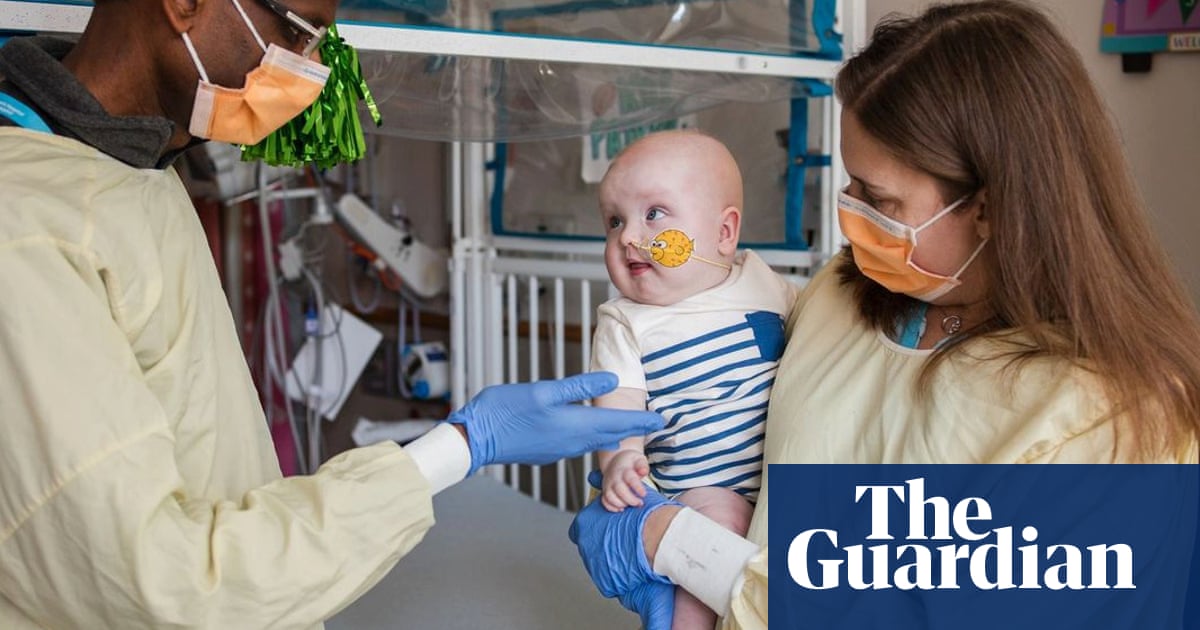Doctors in the US have become the first to treat a baby with a customised gene-editing therapy after diagnosing the child with a severe genetic disorder that kills about half of those affected in early infancy.
International researchers have hailed the feat as a medical milestone, saying it demonstrates the potential for treating an array of devastating genetic diseases by rewriting faulty DNA soon after affected children are born.
Specialists at the Children’s Hospital of Philadelphia and the University of Pennsylvania started work as soon as the boy was diagnosed and completed the complex design, manufacture and safety testing of the personalised therapy within six months.
The baby, known as KJ, had the first dose of the bespoke treatment via an infusion in February and two more doses in March and April. Doctors said he was thriving, but would need careful monitoring for life.
Dr Rebecca Ahrens-Nicklas, a senior physician on the team, said the breakthrough was made possible by “years and years of progress” in gene editing. “While KJ is just one patient, we hope he is the first of many to benefit,” she said.
KJ was born with severe CPS1 deficiency, a condition that affects only one in 1.3 million people. Those affected lack a liver enzyme that converts ammonia, from the natural breakdown of proteins in the body, into urea so it can be excreted in urine. This causes a build-up of ammonia that can damage the liver and other organs, such as the brain.
While some patients receive liver transplants for CPS1 deficiency, babies with severe disease can have suffered damage by the time they are big enough to operate on.
Writing in theNew England Journal of Medicine, the doctors described the painstaking process of identifying the specific mutations behind KJ’s disorder, designing a gene-editing therapy to correct them, and testing the treatment and fatty nanoparticles needed to carry it into the liver. The therapy uses a powerful procedure calledbase editingwhich can rewrite the DNA code one letter at a time.
KJ spent his first few months of life in hospital on a restrictive diet, but since his treatment doctors have been able to increase the amount of protein in his food and use less medication to remove nitrogen from his body. Details were presented at the American Society of Gene and Cell Therapy annual meeting in New Orleans.
The medical team said longer follow-up was needed to see how well the therapy worked, but early signs were encouraging.
“The promise of gene therapy that we’ve heard about for decades is coming to fruition, and it’s going to utterly transform the way we approach medicine,” said Prof Kiran Musunuru at the University of Pennsylvania.
Dr Miguel Ángel Moreno-Mateos, a geneticist at Pablo de Olavide University in Seville, said: “Although this has been a very specific approach, partly motivated by the devastating nature of the disease, it represents a milestone that demonstrates these therapies are now a reality. As the article reports, the patient will be monitored for a long time to ensure his wellbeing and determine whether additional doses are needed to further improve the symptoms of the disease.”
